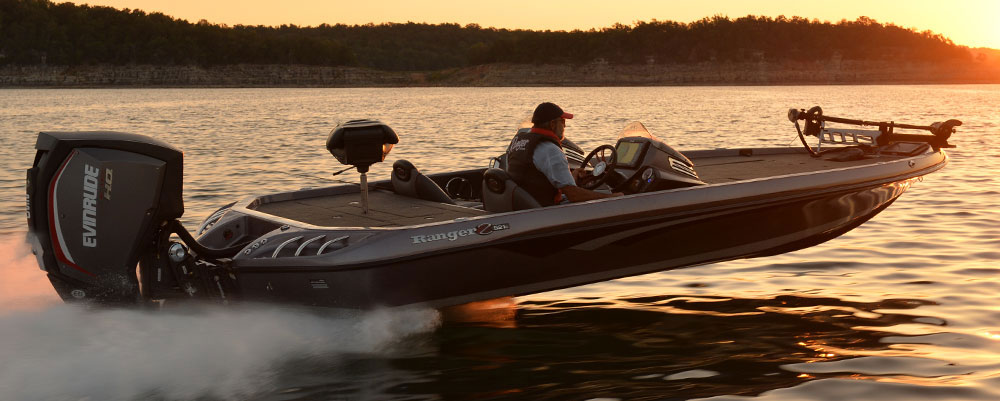Fishing Boats
You’re looking for a fishing boat? We’ll do our best to help you find the right one.
Would you like to own a fishing boat? Since you’ve ended up here on this web page, we’re betting it’s crossed your mind. And we’re not surprised—there are a lot of angling boaters out there and according to the latest figures, over 389,000,000 fishing trips took place on boats in American waters in 2013 (the last year figures are available for). Over 22 million Americans own their own boat, over half of all boating outings include fishing, and boats used for fishing range from one-man kayaks to 100’ long yachts that carry dozens of anglers.
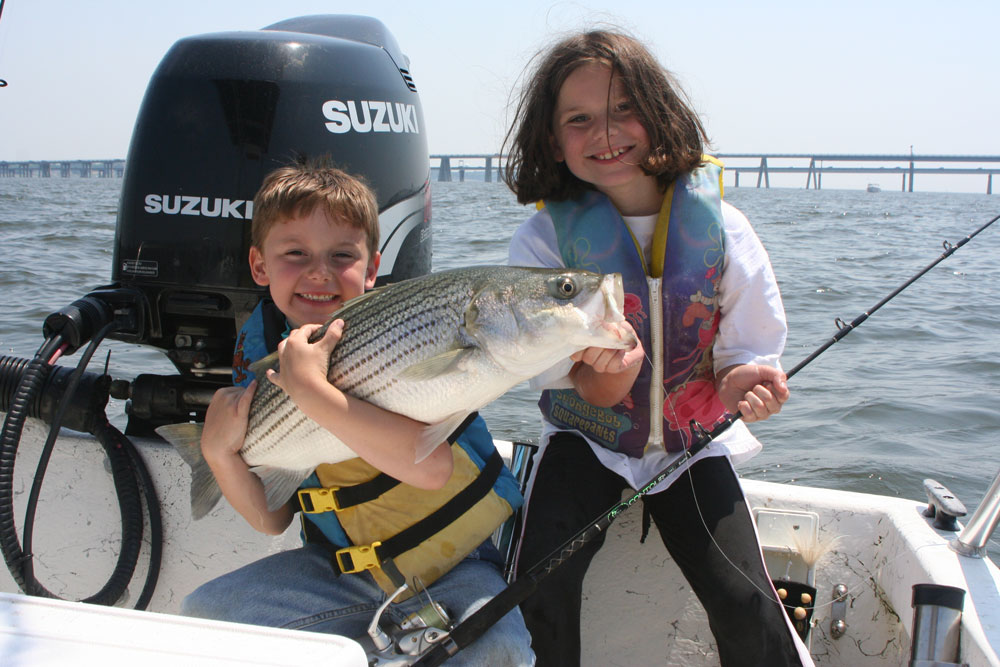
Fishing boats come in all shapes and sizes. The one common denominator: they all make for big, big smiles.
If you’re in the market for a fishing boat—or you just think you might be one day soon—there will be a lot of tough decision-making in your future. Purchasing a boat isn’t to be taken lightly, and we hope you’ll do lots of research before deciding just what type to get, much less finding the exact boat you want to buy. We’re also quite glad that you found us. Because helping you do that research is what we’re all about. It’s not all out of altruism, of course. Yes, we do have listings here on boats.com, numbering well over 200,000 at this very moment. And we certainly hope you’ll peruse those listings once you figure out exactly what type and size boat will fit the bill. But until that time comes, we’ll do our best to coach you through your research from several different angles.
What’s That Boat Made Of?
Modern fishing boats are usually made of aluminum, fiberglass, or in some cases (usually for small boats like car-toppers, kayaks, and canoes) rotationally molded plastic. The differences between these construction materials are significant, and each has its own advantages and disadvantages. Here are five of the most important (if somewhat oversimplified) basic traits for each:
Aluminum
- Lighter than fiberglass or plastic.
- Less expensive than fiberglass.
- Dents instead of shattering.
- Requires very little maintenance.
- Difficult to form into complex hull shapes.
The Tracker Pro Guide V-16 is a great example of a common aluminum fishing boat.
For more information about aluminum as a boatbuilding material, read Aluminum Fishing Boats: Light, Economical, and Seaworthy. And for an interesting take on welded aluminum boats versus riveted construction, read Lund Vs Crestliner.
Fiberglass
- Heavier than aluminum or plastic.
- More expensive than aluminum or plastic.
- Looks magnificent compared to boats built from other materials.
- Requires more maintenance than aluminum or plastic.
- Molded construction allows for complex hullforms, integrated features, and built-in compartments.
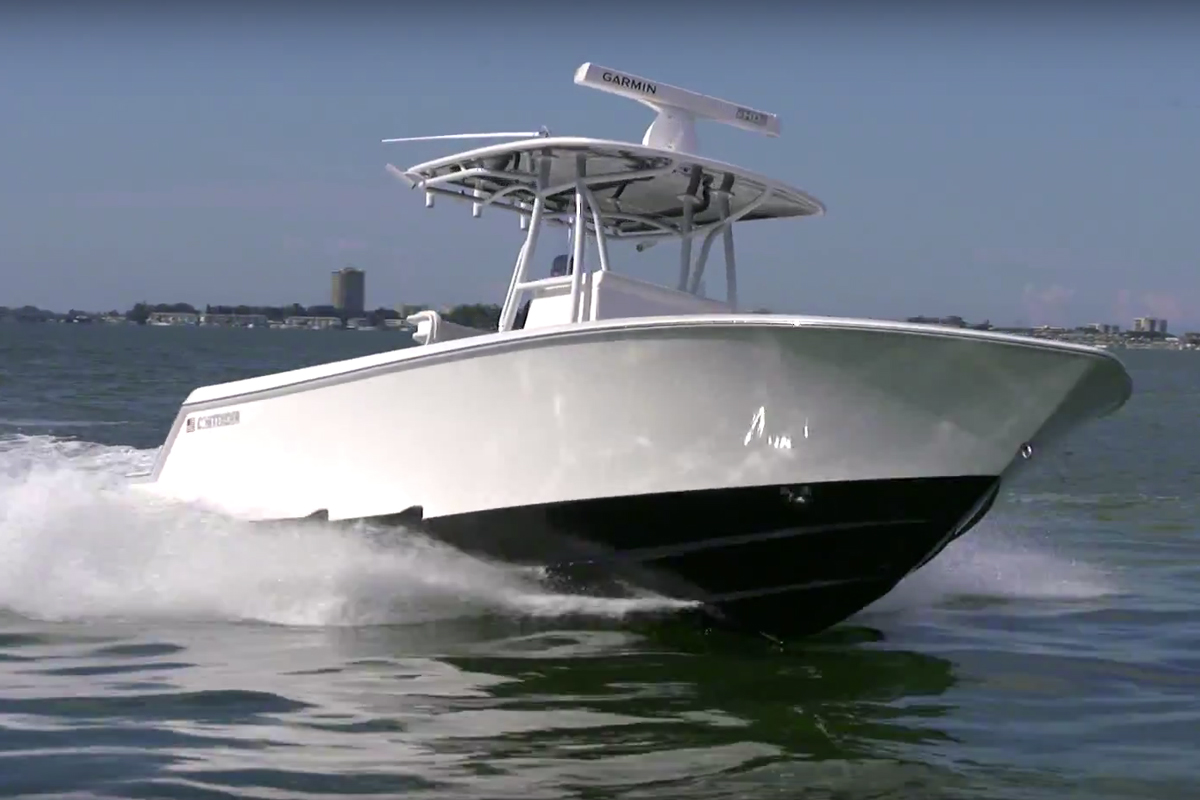
Complex hullforms, like the twin-stepped Contender hull seen here, are usually molded from fiberglass.
For more information on fiberglass as a boatbuilding material, read Shifts in Fiberglass, and watch Boating Tips: Understanding Vacuum Bagging, and Boating Tips: Understanding Foam Cored Boat Construction.
Plastic
- Lighter and in most cases less expensive than fiberglass (this becomes less true as boat size increases).
- Plastic is extremely rugged, and when dented, returns to original form.
- Looks are not as good as painted aluminum or fiberglass.
- Requires zero maintenance.
- Molded construction allows for complex hullforms, integrated features, and built-in compartments.
For more information on rotationally molded plastic as a boatbuilding material, read Rotomolded Dinghies. Also see Triumph 186 Sportsman: Roplene Plastic Fantastic to learn about Triumph’s proprietary rotationally molded Roplene polyethylene boats.
Whichever material they’re made from, fishing boats do, of course, vary quite a bit from one to another. In their most basic forms, we can divide them into two categories: those used for fishing in freshwater ponds, lakes, and rivers, and those used for fishing in saltwater bays and oceans. While these three construction materials are used for both categories of fishing boats, as a general rule of thumb, plastic is used for the smallest boats (commonly up to 12'), aluminum is used for small and medium-sized boats (up into the mid-20-foot size range) and fiberglass is used for medium sized and larger boats (16' and larger, with no limit). Still, there are plenty of differences between freshwater and saltwater fishing boats.
Freshwater Fishing Boats
Freshwater fishing boats can range in size from the 10-foot-long dinghies used on small ponds, all the way up to big 30-foot-plus cabin boats used on big waters like the Great Lakes. They also range in how specialized they are. And for many boaters, this is where things can get confusing. Sure, there are some designs that are merely intended for general fishing use. The best examples of these are jon boats. Jon boats are, in their most basic form, hulls with bench seats and an outboard motor on the back. This simplicity makes them some of the most affordable boats around—check out some listings for jon boats and you might be shocked at just how inexpensive they can be.
Pontoon boats are another good example of all-around freshwater fishing boats. They’re commonly designed for multiple activities ranging from fishing to water skiing, yet their large decks and open lay-outs mean they can be used for a wide range of forms of fishing. And yes, you can find pontoon boats that have been specialized to be fishing platforms; we tell you about them in Can a Pontoon Boat Be a Serious Fishing Boat?
At the other end of the spectrum, you have highly specialized freshwater fishing boats like bass boats and dual-consoles. When it comes to the specific fishing mission they’re designed for, these are usually superior to do-it-all craft like jon boats and pontoons. But on the flip side, they don’t adapt well to different fisheries. That bass boat may rule the reservoir when it comes to casting the shorelines for largemouth, but it can’t hold a candle to a properly outfitted pontoon boat if you want to troll for walleye. And if you decide to take the kids water skiing or wakeboarding instead of fishing for an afternoon, a specialized fishing boat is probably one of the worst options around.
For more information on the boats used for freshwater fishing in general and to learn about some of the different designs, power options, and variables, read Freshwater Fishing Boats.
Saltwater Fishing Boats
Anglers heading for saltwater bays or out into the ocean, naturally, need a very different type of boat than most freshwater fishermen. In many cases they must be larger, and better able to handle big seas. But in all cases, they have to be built with different hardware, wiring, and other components that resist corrosion. A boat intended for freshwater use only won’t last very long in the brine. Those designed and built for saltwater use, on the other hand, can be used in freshwater without any problems—and many anglers do go both ways. In fact, 56 percent of the boat owners who went fishing in 2013 cast their lines in freshwater and 21 percent tried their luck in saltwater, but 23 percent went fishing in both fresh and saltwater.
As with freshwater fishing boats, those built for saltwater use range greatly in both size and specialization. In fact, due to the radically different fisheries, conditions, and distances involved in different types of saltwater fishing, even though the market is smaller there are more types of specialized saltwater fishing boats than there are freshwater fishing boats.
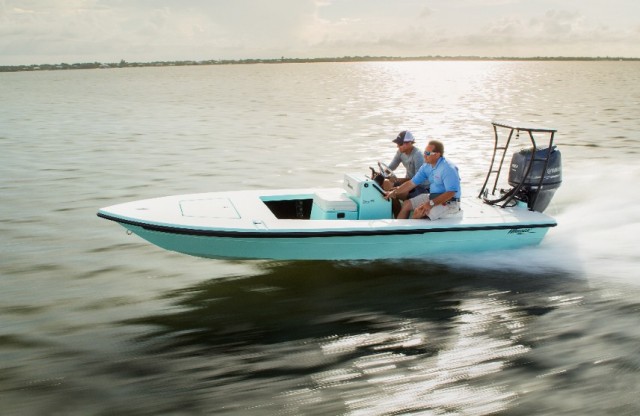
Many saltwater boats, like this Maverick HPX-V II "technical poling skiff ," are highly specialized for specific fisheries.
In general, center-console fishing boats are about the most versatile models you’ll find on the water. But even these are more or less specialized for different fisheries. Bay boats, for example, are center-consoles designed for estuarine fishing for species like redfish and speckled sea trout. Center-console yachts like the Hydrasports 53 Suenos, the largest of its kind, are designed for runs through the open ocean—and could never fish in the shallow waterways a bay boat thrives in. Yet both are most certainly center-consoles.
For more information on the boats used for saltwater fishing in general and to learn about some of the different designs, power options, and variables, read Saltwater Fishing Boats.
How Big is Big Enough?
This is a question our boating experts hear all the time. And unfortunately, there’s no easy answer. Some 20-footers are capable of handling rougher seas than some boats twice their size. And some that would be perfectly safe on a calm afternoon could be woefully out of place on the very same body of water when a front rolls through and weather conditions get bad.
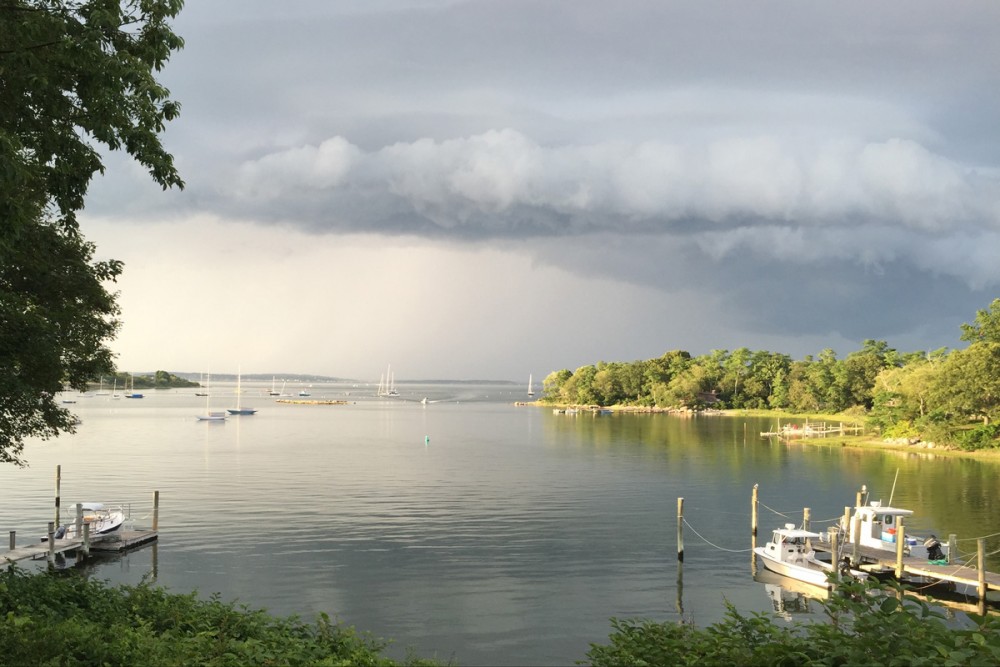
Abrupt changes in weather can turn glassy-calm water rough in the blink of an eye, so a big part of knowing how capable your fishing boat is depends on your own judgment.
Essentially, it all boils down to judgment calls. It’s best to own a boat for a while and learn its capabilities, before pushing to larger waters and tougher conditions. New boaters and old salts alike will benefit by looking through our Seamanship section, which has hundreds of articles and videos that are designed to help us all become better boaters.
We hope that you don’t feel overwhelmed at this point, but owning a fishing boat is sort of a big deal. Yes, those of you new to boats will have to learn a lot. Shopping for your new boat may take a long time. And in truth, for a fishing boat owner, the learning and researching never really ends. But trust us, it’s worth it. You’ll think so, too, once you pull away from the dock in your own fishing boat. We’d bet our bottom dollar.
Editor's Note: This article was originally published in January 2016 and updated in November 2018.

